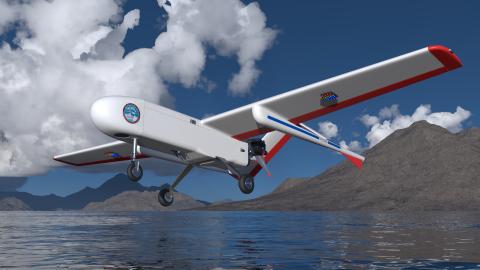
The Sensor Integrated Environmental Remote Research Aircraft (SIERRA) is a medium-class, unmanned aircraft system (UAS) that can perform remote sensing and atmospheric sampling missions in isolated and often inaccessible regions, such as over mountain ranges, the open ocean, or the Arctic/Antarctic. UAS missions are of particular value when long flight durations or range-measurement requirements preclude a human pilot or where remote or harsh conditions place pilots and high-value aircraft at risk. Designed by the U.S. Naval Research Laboratory and developed at NASA's Ames Research Center, the SIERRA is well suited for precise and accurate data collection missions because it is large enough to carry up to 110 pounds of scientific instruments and fly up to 13,000 feet, yet small enough not to require a large runway or hangar.
The SIERRA Program, managed at NASA's Ames Research Center, is focused on providing end-to-end support for UAS flight missions in support of Earth science research and applications activities. The program has capabilities to support all phases of UAS missions, including experiment design, requirements definition, payload integration design and support, airworthiness and flight safety reviews, airspace access including COA development, deployment planning, mission planning and flight operations.SIERRA-B completed flight qualification and began working with Payloads in November 2018.
